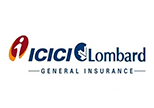Understanding Car Depreciation Rate in Car Insurance
Impact of Car Depreciation In Car Insurance Policy
Every machine undergoes deprecation with time, as does your car. There are multiple factors that lead to vehicle depreciation. In this article, we will understand about car depreciation in detail and how it affects your car insurance premium. This will help you make an informed decision when you buy or renew your car insurance policy. We will also delve into some of the ways in which you can reduce the depreciation of your car. So, let’s begin by understanding the meaning of vehicle depreciation.
Table of Contents

What is Motor Vehicle Depreciation?
The term "motor vehicle depreciation" describes how an automobile's value decreases over time as a result of several factors like age, wear and tear, and market conditions. A new car's value starts to decline the instant it is driven off the lot. Depreciation has an impact on both the car's resale value and the amount the insurer will pay out in the event of a claim.
How Depreciation Impacts Your Car Insurance?
Depreciation impacts the insured declared value (IDV) of your car, which in turn impacts your car insurance premium. The insured declared value is the claim amount that you receive from your insurance provider in case your car gets stolen or it gets damaged due to any mishap. As the value of your car depreciates, the IDV also reduces, which may lead to a lower claim amount.
Factors Affecting Car Depreciation Rate
There are multiple factors that determine the IDV depreciation. These are:
1. Your vehicle’s age
Your vehicle will depreciate faster as it gets older. Therefore, the IDV of your vehicle gets reduced. More the depreciation, less will be the IDV.
2. Model of your car
If the model of your car is new, then it will get better insurance coverage due to its low depreciation rate.
3. If your car is well-maintained
If your vehicle is in bad condition, then it will undergo more wear and tear. This will reduce its IDV due to more depreciation.
4. Mileage
Higher mileage may lead to more wear and tear of the car components thus depreciating it faster.
Different Rates of Vehicle Depreciation
Different parts of a car or any vehicle depreciate at a different rate. For instance:
- Rubber and plastic parts have a higher depreciation rate due to faster wear and tear.
- Metallic parts depreciate slower but are still subject to corrosion and damage over time.
- Parts made of glass typically have a lower depreciation rate since they don't wear out easily.
The Insurance Regulatory and Development Authority of India (IRDAI) has set the standard rate of vehicle depreciation. The insurance providers use this amount to determine your car's insured declared value. It is determined by the age of your vehicle, or the amount of years you have driven it since you bought it.
|
Age of the car |
Depreciation Value |
|
Six or less than six months |
5 |
|
Six months to 1 year |
15 |
|
01 to 02 years |
20 |
|
02 to 03 years |
30 |
|
03 to 04 years |
40 |
|
04 to 05 years |
50 |
|
More than 05 years |
Based on negotiation |
How To Calculate Car Depreciation?
You can calculate the depreciation value of your car using two methods::
Method 1: Diminishing value technique
Depreciation Value = Purchase value of car * (number of days car owned ÷ 365) * (effective life in years ÷ 200%)
Note: The depreciation value, here, is calculated considering the base value of the car.
Method 2: Prime cost technique
Depreciation Value = Cost of running the car * (number of days car owned ÷ 365) * (100% ÷ effective life in years)
Note: The depreciation value, here, is calculated as a particular percentage of the total cost.
How to Reduce a Car’s Depreciation Rate?
While depreciation is unavoidable, car owners can take steps to reduce its impact:
Regular Maintenance: Keeping the car in good condition can slow down depreciation. A well-maintained car undergoes less wear and tear, thus also upholding its value.
Limit Mileage: Lower mileage reduces wear and tear, helping with less depreciation.
Choose a Better Model: Purchase a model that is reputed for its efficient performance. A better model depreciates slower.
Zero Depreciation Car Insurance
Zero depreciation car insurance is an add-on coverage that covers the full cost of replacing car parts without considering the depreciation value. This type of insurance is particularly beneficial for new car owners as it ensures higher claim payouts, covering the entire cost of repairs or replacements.
Tips For Maintaining Car Value
Buying a car is an important decision that involves several factors, majorly money. Many people invest a huge chunk of their savings into buying top-end cars. When you spend so much money on purchasing a car and car insurance, one must be mindful of its wear and tear.
Regular Maintenance
Maintaining a car is not just about cleaning it inside out occasionally. Car owners must conduct regular servicing to ensure that their vehicle provides optimum performance. All major car companies facilitate care and regular maintenance to their customers, including servicing. If you feel that your car company’s servicing charges are over the top, you can reach out to regular car mechanics to understand how to change the engine oil and get its mechanical parts serviced or even ask them to do it at a lower cost. Whatever may be the case, remember to service your car when it's the right time. Give rust coating to your car’s body if you live in a region where heavy rainfalls are common.
Keeping The Car Clean
This may seem like a small task, however, the cost of keeping your car unclean can be tremendous. Unattended food waste in the car increases the chances of rodent infestation, thus putting your car’s electronic parts at the risk of getting damaged. A major part of India experiences heavy rainfalls causing the roads to have dirty, muddy slush. After one ride, it is recommended that owners deep clean the car inside out, as certain chemicals in the mud could cause damage to the car’s paint. Use car-friendly products to clean the car.
Document All Repairs and Maintenance
Record the repairs and maintenance work with proper receipts to enhance your car’s resale value. Car insurance companies look out for such details while determining your car’s value. Lastly, consider protective measures like using seat covers and paint protection films to shield against everyday wear, ensuring your car remains appealing for future buyers. Implementing these strategies can significantly enhance your vehicle's resale value over time.
Conclusion
Car depreciation and your car insurance premium rates are interconnected. If you own a car, you must take the time to understand that with every passing year of your car purchase, its value depreciates. This affects your chances of reselling the car or renewing your car insurance policy. Regular servicing, maintenance and taking the necessary measures to protect your car from regular wear and tear can fetch better resale value. In addition, following these good practices can improve the IDV while filing an insurance claim.
FAQs
Q: How much does the value of a car depreciate each year?
A: On average, a car depreciates 15-20% annually in the first few years, and the rate increases as your car becomes older.
Q: In case of total loss, can I get full compensation for my car’s value?
A: If you own a standard insurance policy, you will be paid based on the depreciated value, but with zero depreciation coverage, you can get full compensation.
Q: Does mileage affect my insurance premium?
A: Yes, higher mileage can lead to higher premiums as it indicates more wear and tear on the vehicle.
Q: Can I negotiate the IDV with my insurer?
A: Yes, you can negotiate the IDV, but it should be within the acceptable range as per the insurer’s guidelines.
Q: What is the impact of IDV on my premium amount?
A: Less insured value means less premium, and if you want more IDV, then you have to pay a higher premium.














































